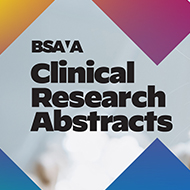
The charity marks World Spay Day with important reminder.
This World Spay Day (25 February), animal rescue organisation Battersea are celebrating a milestone achievement of neutering its 200,000th cat through its low cost-neutering scheme, C4.
Designed to support pet owners and tackle the rising population of unwanted felines, C4 was established in 1999 by animal welfare charities Battersea, Cats Protection, RSPCA and SNIP to help control the growing feline population in and around London.
It sees the charities handing out low-cost neutering vouchers at local veterinary practices and, more recently, vouchers for microchipping – something that recently became a legal requirement for all owned cats in England.
As the scheme enters its 26th year of operation, the charities involved are bringing attention to the importance of neutering cats to avoid unwanted pregnancies and support the general health and welfare of cats.
JoAnna Puzzo, feline behaviour and training manager at Battersea, said: “Neutering is an incredibly important consideration for cat owners, not only to prevent roaming behaviour often seen in unneutered cats and female cats having accidental litters, but also to help reduce the risk of disease transmission and future health challenges, allowing for healthier and happier pets.
“Through jointly funding the C4 scheme with our sector peers, we are able to help even more cats beyond our gates and support owners with the cost of neutering to improve the welfare of cats in and around London.”
Battersea reported its highest number of cats needing its help in the last five years in 2024, including a rise in stray and young litters. One such cat was one-year old Nik Nak, who was brought to Battersea after being found as a heavily pregnant stray.
Nik Nak and her kittens were cared for by one of Battersea’s dedicated foster carers in their own home and, after learning about each cat’s personality and needs, they were matched to new owners and have all since gone to loving homes.
Alison Richards, chief veterinary officer at Cats Protection, said: “At Cats Protection we are excited to be collaborating with Battersea as part of the C4 group, to support the welfare of cats across the London region.
“Targeted neutering programmes, such as C4, not only offer a positive welfare intervention for those individual cats receiving support with neutering but help us work towards creating a more balanced cat population, where every cat experiences a good quality of life.”
Image (C) Shutterstock.



 The BSAVA has opened submissions for the BSAVA Clinical Research Abstracts 2026.
The BSAVA has opened submissions for the BSAVA Clinical Research Abstracts 2026.